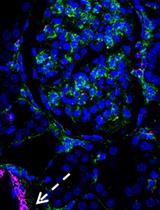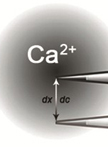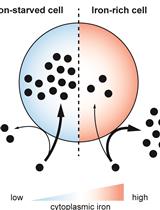- 提交稿件
- 订阅
- CN
- EN - English
- CN - 中文
- EN - English
- CN - 中文
Calcium Mobilization Assay to Measure the Activity of Gq-coupled Receptors
采用钙流检测法测定Gq偶联受体的活性
发布: 2013年06月20日第3卷第12期 DOI: 10.21769/BioProtoc.790 浏览次数: 25459
评审: Cheng Zhang

相关实验方案

双标记PDGFR-β和α-SMA在猪急性肾损伤模型中检测周细胞-肌成纤维细胞转化作为早期纤维化标志物的研究
Alessandra Stasi [...] Giuseppe Castellano
2020年10月05日 3563 阅读
Abstract
Calcium mobilization assay is a cell-based second messenger assay to measure the calcium flux associated with Gq-protein coupled receptor activation or inhibition. The method utilizes a calcium sensitive fluorescent dye that is taken up into the cytoplasm of most cells. In some cell lines in which organic-anion transporters are particularly active (e.g. CHO, HeLa), addition of probenecid, an inhibitor of anion transport, is required for retention of this dye in the cells. The dye binds the calcium released from intracellular store and its fluorescence intensity increases. The change in the fluorescence intensity is directly correlated to the amount of intracellular calcium that is released into cytoplasm in response to ligand activation of the receptor of interest. This protocol can be applied to most mammalian cell lines expressing both endogenous and transiently/stably transfected receptors. The method is sensitive enough to be used for low-expressing systems or high throughput screening of target of interest.
Note: The method does not differentiate the Ca2+ mobilization induced by Gqα from the Ca2+ mobilization induced by Gβγ.
Materials and Reagents
- Cells of choice: HEK293 cells stably expressing Angiotensin II Type 1 Receptor (AT1R)
- Ligands of choice: Sar1-Angiotensin II (Bachem, catalog number: H1740 )
- Poly-L-lysine (Sigma-Aldrich, catalog number: P4707 )
- 1x phosphate-buffered saline (PBS)
- FLIPR Calcium 5 assay kit (Molecular Devices, catalog number: R8185 )
- 96-well, FlexStation pipet tips, black (Molecular Devices, catalog number: 9000-0911 )
- Probenecid (Life Technologies, Invitrogen™, catalog number: P36400 )
- Cell growth media (see Recipes)
Equipment
- Incubator (5% CO2, 37 °C)
- FlexStation® 3 Multi-Mode Microplate Reader (Molecular Devices)
- Assay plate: 96-well microplate, tissue culture treated, black/clear, with lid (Greiner bio one, catalog number: 655090 )
- Ligand plate: Clear 96-well microtest plate, tissue culture treated, U-bottom (BD Biosciences, Falcon®, catalog number: 353077 )
Software
- SoftMax® Pro Microplate Data Acquisition & Analysis Software (supplied with the FlexStation® 3 Multi-Mode Microplate Reader)
Procedure
文章信息
版权信息
© 2013 The Authors; exclusive licensee Bio-protocol LLC.
如何引用
Readers should cite both the Bio-protocol article and the original research article where this protocol was used:
- Unal, H. (2013). Calcium Mobilization Assay to Measure the Activity of Gq-coupled Receptors. Bio-protocol 3(12): e790. DOI: 10.21769/BioProtoc.790.
- Unal, H., Jagannathan, R., Bhatnagar, A., Tirupula, K., Desnoyer, R. and Karnik, S. S. (2013). Long range effect of mutations on specific conformational changes in the extracellular loop 2 of angiotensin II type 1 receptor. J Biol Chem 288(1): 540-551.
分类
细胞生物学 > 基于细胞的分析方法 > 离子分析
细胞生物学 > 细胞染色 > 其它化合物
您对这篇实验方法有问题吗?
在此处发布您的问题,我们将邀请本文作者来回答。同时,我们会将您的问题发布到Bio-protocol Exchange,以便寻求社区成员的帮助。
提问指南
+ 问题描述
写下详细的问题描述,包括所有有助于他人回答您问题的信息(例如实验过程、条件和相关图像等)。
Share
Bluesky
X
Copy link










